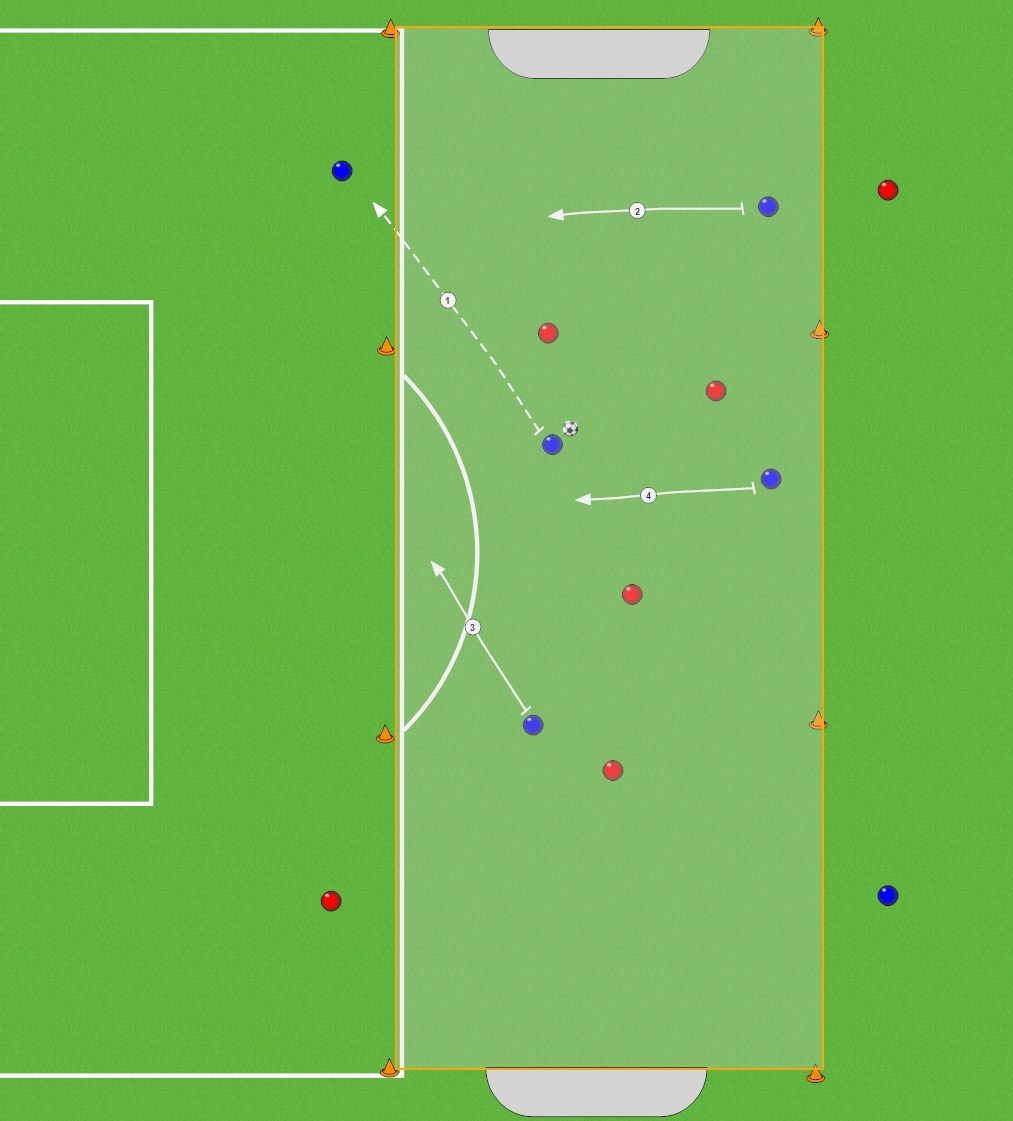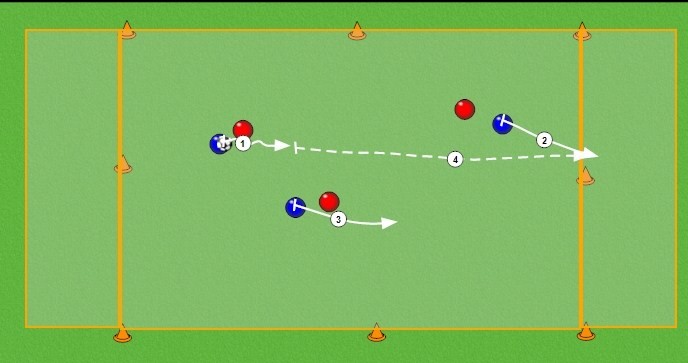4 V 4 Receiving Game for High School Teams
In order to develop an offense that puts the ball in the back of the net, a critical skill that needs to be developed is to be able to receive a pass and use a first touch to create an opportunity to attack. This article diagrams two 4 V 4 small sided games that can be used to improve receiving for your high school team.
First, from a technical standpoint, it is important to review several coaching points to receive and prepare the ball. Review the following with your players:
- Proper body position and balance to receive a ball in the air or on the ground.
- Teach the receiving player to move to get into line of the flight of the ball instead of reaching for the ball.
- Have players recognize the flight of the ball and determine which body surface they are going to use to receive the ball – head, chest, thigh, or foot.
- Work with players to present that body surface when controlling the ball, and have them relax and withdraw the body surface just before contact.
- Make sure they knew the importance of the first touch to control and prepare the ball for the next play.
- Teach your players to know where the pressure is coming from so their first touch can be away from pressure. Emphasize vision to your players.
Second, conduct a technical warm-up where you break the team down into groups of two or three and they use half the field to make different types of passes to each other. Each player focuses on receiving the pass, implementing the techniques covered above. As a coach, you work with individual players when they are not executing one of the above techniques. You should focus particularly on the first touch to control the pass.
Third, move to small sided receiving games to reinforce the concept of receiving. Here are two suggestions:
Game #1 – 4 V 4 with 4 Neutrals
Size of Field:
- Use cones to mark out a 40 x 25 yard field.
- Place goals at each end line by using two cones placed two yards apart.
- In the diagram below, you can see that there are 4 blue players that have possession of the ball and 4 red inside the grid are defending. There are 4 neutral players outside of the grid (2 blue and 2 red in this example) who can’t enter the grid but can be passed to by the offensive team, so in effect it is an 8 V 4 situation. In the diagram below, the blue player has the ball and passes outside the grid to the blue neutral player, while the other blue players in the grid make runs to space to receive a pass back from the neutral player.

Rules:
- A team can score by shooting the ball in the goal
- The Neutral players can be used to keep possession and can move along the sidelines. They will replace the winning team.
- The Neutral players can throw-in to the appropriate team if the ball goes out of bounds on a non-directional pass.
- The key is to maintain possession by having a good first touch, and using possession to create good scoring opportunities.
- Defenders need to play good defense and seek to convert in transition
- If defenders take possession, they then use the Neutral players and attempt to score on the opposite goal.
Key Coaching Points:
- Players must use proper technique to receive passes from their players or from neutral players. The coach can award the team to the defender if the player exhibits poor technique.
- Emphasize using the outside Neutral players to widen the field and maintain possession.
- Read the game, anticipate passing opportunities, and make good first touches away from pressure.
- Defensively, look for interception and mishandled ball opportunities, transition quickly, and don’t allow good shooting opportunities.
Receiving Game #2
Size of Field:
- Use cones to mark out a 40 x 25 yard field.
- Make an “end zone” by placing additional cones seven yards beyond the end line.
- In the diagram below, you can see a 3 V 3 game where the blue team has the ball. In this case, the offensive player has beaten the defender and makes a run to the end zone. The player with the ball makes a dribbling move to beat the defender and then passes to the player making the run in the end zone. The red team (defenders) may not defend in the neutral zone. Once the blue team scores, they immediately dribbling into the grid and start play. They now attempt to score in the other end zone and the red stays defending until they secure the ball.

Rules:
- You can score by passing the ball to a teammate running into the “end zone,” either in the air or on the ground.
- Player receiving the pass must control the ball cleanly instead the “end zone” for the goal to count.
- The key is to maintain possession by having a good first touch, and using possession to create good scoring opportunities.
- Defenders need to play good defense but can’t enter the “end zone” to defend a pass.
- If defenders take possession, they then attempt to pass the ball into the opposite “end zone.”
Key Coaching Points:
- Players must use proper technique to receive passes from their players or from neutral players. The coach can award the team to the defender if the player exhibits poor technique.
- Read the game, anticipate passing opportunities, and make good first touches away from pressure.
- Defensively, look for interception and mishandled ball opportunities and transition quickly to the opposite “end zone.”
For similar passing drills that will help your team control the ball and score more goals, we recommend checking out this DVD from Coach Brandt:
Creating Dynamic Soccer Practices

Wow, that was a great read through. Finally, somebody who really thinks and is familiar with what they are writing about. Quite hard to find these days, especially on the internet. I saved your blog and will make sure to keep coming back here if this is how you always post. Many thanks, keep it up!